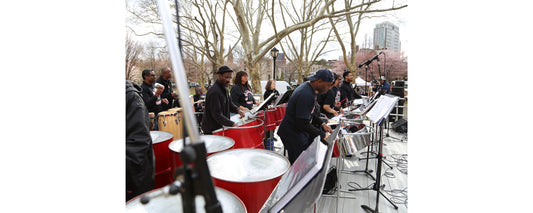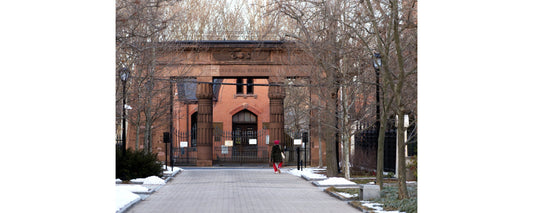As a Trinity College undergraduate in 1973, I was thrilled to discover Cinestudio. I was already a movie enthusiast, but that was a far different era, before the growth of multiplexes much less streaming services. My exposure to film prior to college was limited to weekly trips to New Haven’s neighborhood theaters, prime-time movie showcases on network TV and local station time-fillers like the weekday “4:30 Movie”—always squeezed in before the 6 p.m. news—and “The Late Show” at 11:30.
So a seven-nights-a-week (plus weekend matinees) art house, located on campus just steps from my dorm room, was a godsend. It screened double features almost every evening for $3 (if you came for one movie, you paid $1.50) and offered reliable entertainment in Hartford, a city whose downtown still isn’t so easy for students to access. During my sophomore year I became a volunteer ticket-seller in the box office; in exchange, I got to see movies for free. Better still, after each weekly shift, I climbed the stairs to the projection room—I’d never been in one before—and claimed a free pass to give to a friend.
Frequenting Cinestudio gave me an invaluable education on moviemaking and movie history—and a thrilling routine. I became addicted to taking cinematic journeys while lost in the dark with a group of like-minded strangers. Mostly screening second-run features, classics and foreign films, Cinestudio showed me the movies of Cary Grant, Katharine Hepburn and Humphrey Bogart as well as pioneering directors like Charlie Chaplin, Alfred Hitchcock and Orson Welles. It was also my introduction to budding Hollywood heavyweights Al Pacino, Robert De Niro, Meryl Streep, Martin Scorsese, Stephen Spielberg and Woody Allen, not to mention foreign auteurs like Franҁois Truffaut, Ingmar Bergman and Federico Fellini. Early on, the theater earned a reputation for screening some of the movie business’s riskiest—and in some cases most enduring—cult films, including 1968’s Night of the Living Dead, 1972’s Pink Flamingos and 1975’s Rocky Horror Picture Show. Cinestudio co-founder James Hanley later told me, “We ran Rocky Horror when 20th Century Fox was still trying to forget they made it.”
In the late 1960s, Trinity students Hanley and his partner Peter McMorris, along with a group of friends, got the notion to use an auditorium in the school’s Clement Chemistry Building—a classic 1935 McKim, Mead & White design seldom used for college lectures due to what were then its terrible acoustics—for a film series. The screen they ordered didn’t arrive in time for the February 16 grand opening, a double feature of Alice’s Restaurant and Yellow Submarine, so, at the last minute, they raided the local Bradlees discount department store for sheets, stapling them to 2-by-4s hung on the wall. Nonetheless, opening night was a sellout. Two weeks later, still without a screen and faced with presenting a movie in Cinemascope, the volunteers installed more sheets.
Once the screen arrived, they outfitted it with a motorized gold Austrian curtain that complemented, to perfection, the improvements they’d already made: lush upholstered red folding-chair theater seats and red carpeting decorated with a gold lion courant insignia. The general aura of the nearly 500-seat venue, which boasts a sweeping balcony, is that of a 1930s movie palace, albeit one that now features a superior Dolby/Altec sound system and ultra high-definition 4K digital projection capability. (It’s kept its 35 and 70mm projectors in working order for the archival films that still require their use.)
Over the years, two annual festivals have taken root at the theater: the Connecticut LGBTQ Film Festival and, screening student films from all over the world, the Trinity Film Festival. Cinestudio also participates in the Metropolitan Opera’s Met Live and England’s National Theatre Live series, screening live feeds of each’s season’s operas and plays.
In 2002, the theater incorporated as a 501(c)(3) not-for-profit arts organization, which enabled it to raise the $200,000 needed to go digital 10 years later. The ragtag group of cinema-obsessed volunteers that built the theater, ran films, sold tickets and swept the auditorium out after every show has now grown to a corps of 50 students and community members overseen by a board of directors, an executive director and a team of four projectionists.
When I visited after several years to see the 2023 musical The Color Purple, I was pleased that the theater has lifted its decades-long taboo against selling refreshments, offering a modest selection of candy, bottled drinks and fresh popcorn. One thing that has not changed is Cinestudio’s functional independence from the college; Trinity’s administration has never held authority over what the cinema screens. Faculty, staff, students and alumni have, however, helped curate the 1823 Series, part of the college’s bicentennial celebrations, whose final film, Lawrence of Arabia, opens April 7 at 1 p.m. and will be screened in ultra-wide 70mm. The free public event will be prefaced by a “coffee talk” at 12:30 with Hanley and McMorris.
These days, the theater offers more first-run, big-title features alongside arthouse fare. Upcoming picks include an “Oscar-Palooza” schedule March 1 through 10, offering audiences another chance to see most of this year’s Best Picture nominees on the big screen. Current tickets cost $10 general admission per film ($8 for seniors and students)—still a bargain for the feeling of grandeur and mystery we simply can’t get at home.
Cinestudio
300 Summit St, Hartford (map)
(860) 297-2544
www.cinestudio.org
Written and photographed by Patricia Grandjean.







